Filter by
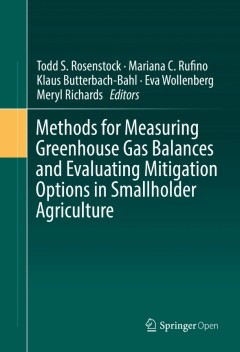
Methods for Measuring Greenhouse Gas Balances and Evaluating Mitigation Optio…
This book provides standards and guidelines for quantifying greenhouse gas emissions and removals in smallholder agricultural systems and comparing options for climate change mitigation based on emission reductions and livelihood trade-offs. Globally, agriculture is directly responsible for about 11% of annual greenhouse gas (GHG) emissions and induces an additional 17% through land use change,…
- Edition
- 1
- ISBN/ISSN
- 978-3-319-29792-7
- Collation
- XV, 203
- Series Title
- -
- Call Number
- -
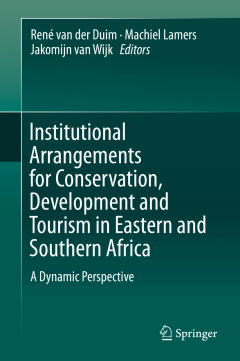
Institutional Arrangements for Conservation, Development and Tourism in Easte…
This book presents an overview of different institutional arrangements for tourism, biodiversity conservation and rural poverty reduction in eastern and southern Africa. These approaches range from conservancies in Namibia, community-based organizations in Botswana, conservation enterprises in Kenya, private game reserves in South Africa, to sport hunting in Uganda and transfrontier conservatio…
- Edition
- -
- ISBN/ISSN
- 978-94-017-9528-9
- Collation
- XX, 265
- Series Title
- -
- Call Number
- 333.7 INS
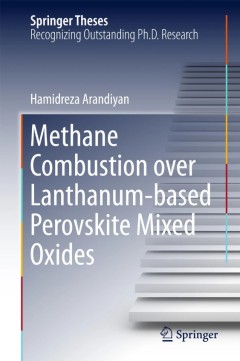
Methane Combustion over Lanthanum-based Perovskite Mixed Oxides
This book presents current research into the catalytic combustion of methane using perovskite-type oxides (ABO3). Catalytic combustion has been developed as a method of promoting efficient combustion with minimum pollutant formation as compared to conventional catalytic combustion. Recent theoretical and experimental studies have recommended that noble metals supported on (ABO3) with well-order…
- Edition
- 1
- ISBN/ISSN
- 978-3-662-46990-3
- Collation
- XXII, 103
- Series Title
- Springer Theses
- Call Number
- -
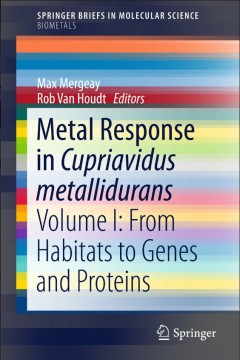
Metal Response in Cupriavidus metallidurans:Volume I: From Habitats to Genes …
This book is the first volume of a two-volume set summarizing 40 years of key research findings directly related to metal-resistant Cupriavidus/Ralstonia (Betaproteobacteria). In this first volume, the historical and geographical context of these bacteria, which are mostly found in industrial and polluted environments linked to zinc and other non-ferrous metallurgy, is sketched to illustrate th…
- Edition
- 1
- ISBN/ISSN
- 978-3-319-20593-9
- Collation
- IX, 89
- Series Title
- SpringerBriefs in Molecular Science
- Call Number
- -
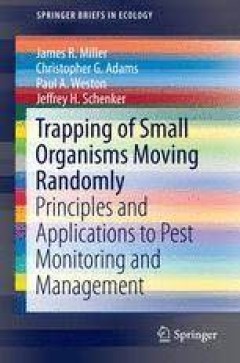
Trapping of Small Organisms Moving Randomly
This new book is the first to make logical and important connections between trapping and foraging ecology. It develops and describes—both verbally and mathematically--the underlying principles that determine and define trap-organism interactions. More important, it goes on to explain and illustrate how these principles and relationships can be used to estimate absolute population densities i…
- Edition
- 1
- ISBN/ISSN
- 978-3-319-12994-5
- Collation
- XVIII, 114
- Series Title
- SpringerBriefs in Ecology
- Call Number
- -

Translational Toxicology
Bringing together a distinguished interdisciplinary team of contributors, this volume provides a comprehensive exploration of translational toxicology—a systematic approach to developing therapeutic interventions that can protect against, mitigate, or reverse the effects of exposures. In particular, the book addresses modes of action and biomarkers, developmental risks of exposures, and poten…
- Edition
- 1
- ISBN/ISSN
- 978-3-319-27449-2
- Collation
- XV, 380
- Series Title
- Molecular and Integrative Toxicology
- Call Number
- -

Eutrophication and Oligotrophication in Japanese Estuaries The present statu…
This book presents lessons learnt from Japan’s past, in relation to coastal waters, industrial pollutants and concentrated urban populations. It examines ecosystem damage and pollution in coastal sea areas and addresses the question: What is the present status of Japanese estuaries from the view point of eutrophication and oligotrophication? The authors describe three typical situations, name…
- Edition
- -
- ISBN/ISSN
- 978-94-017-9915-7
- Collation
- 17 b/w illustrations, 140 illustrations in colour
- Series Title
- -
- Call Number
- -
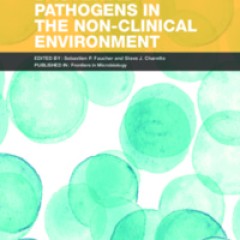
Bacterial pathogens in the non-clinical environment
When thinking about bacterial pathogens, most will consider their interaction with humans. Nevertheless, many pathogens affecting humans will not be transmitted directly from one individual to another but will rather come from or transit through the environment to infect the human host. Outside their hosts, bacterial pathogens must be able to resist environmental stresses and perhaps grow …
- Edition
- -
- ISBN/ISSN
- 16664-8714
- Collation
- -
- Series Title
- -
- Call Number
- 579 FAU b
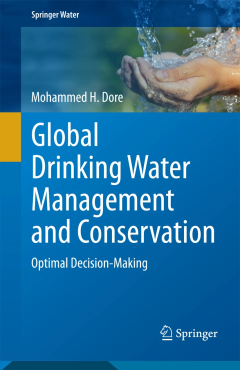
Global Drinking Water Management and Conservation
This book discusses different drinking water treatment technologies and what contaminants each treatment method can remove, and at what costs. The production of drinking water requires adequate management. This book attempts to fill the existing knowlegde gap about (a) water treatment technologies and their costs, (b) risk assessment methods, (c) adverse health effects of chemical contaminants,…
- Edition
- -
- ISBN/ISSN
- 978-3-319-11031-8
- Collation
- -
- Series Title
- -
- Call Number
- 333.7 MOH g
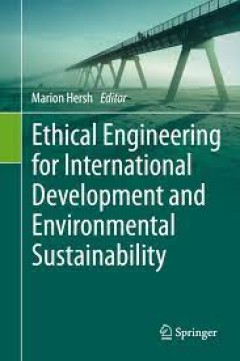
Ethical Engineering for International Development and Environmental Sustainab…
Ensuring that their work has a positive influence on society is a responsibility and a privilege for engineers, but also a considerable challenge. This book addresses the ways in which engineers meet this challenge, working from the assumption that for a project to be truly ethical both the undertaking itself and its implementation must be ethically sound. The contributors discuss varied to…
- Edition
- -
- ISBN/ISSN
- 978-1-4471-6618-4
- Collation
- 28 b/w illustrations, 12 illustrations in colour
- Series Title
- -
- Call Number
- -
 Computer Science, Information & General Works
Computer Science, Information & General Works  Philosophy & Psychology
Philosophy & Psychology  Religion
Religion  Social Sciences
Social Sciences  Language
Language  Pure Science
Pure Science  Applied Sciences
Applied Sciences  Art & Recreation
Art & Recreation  Literature
Literature  History & Geography
History & Geography